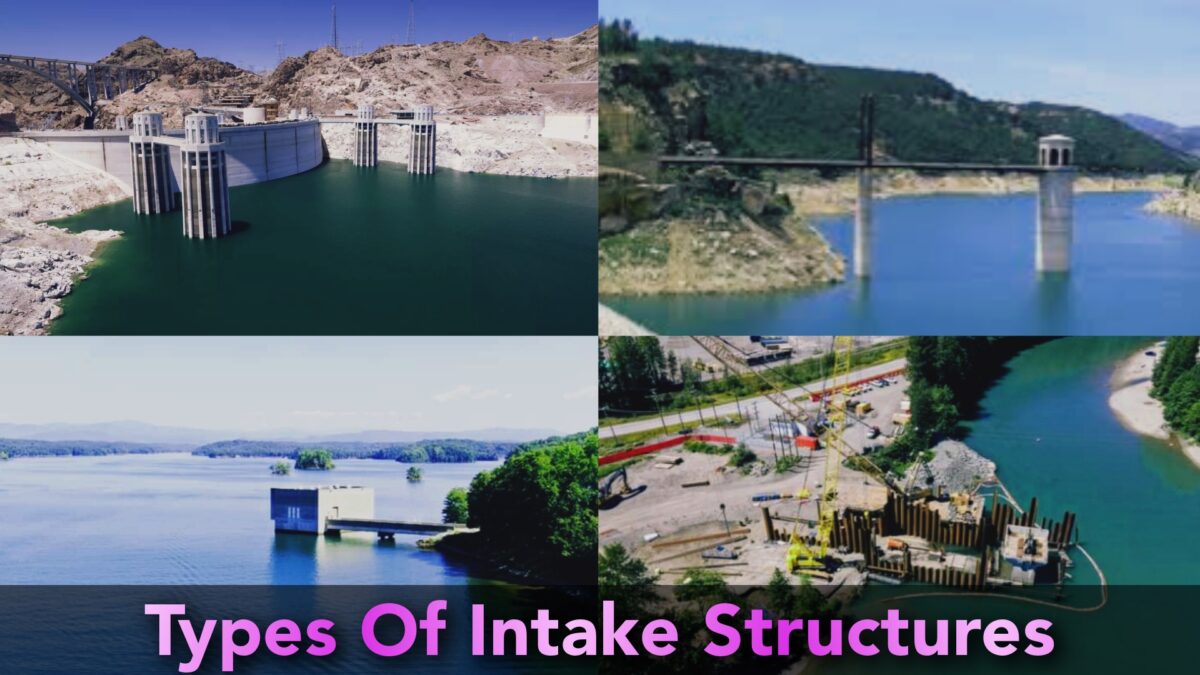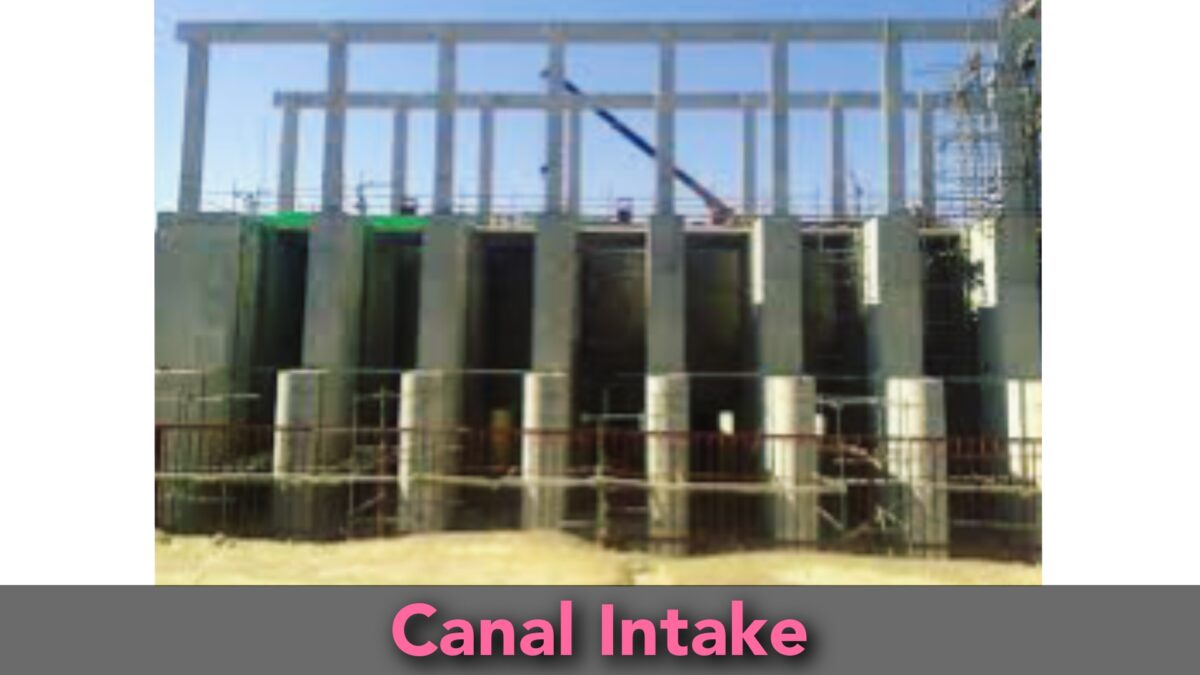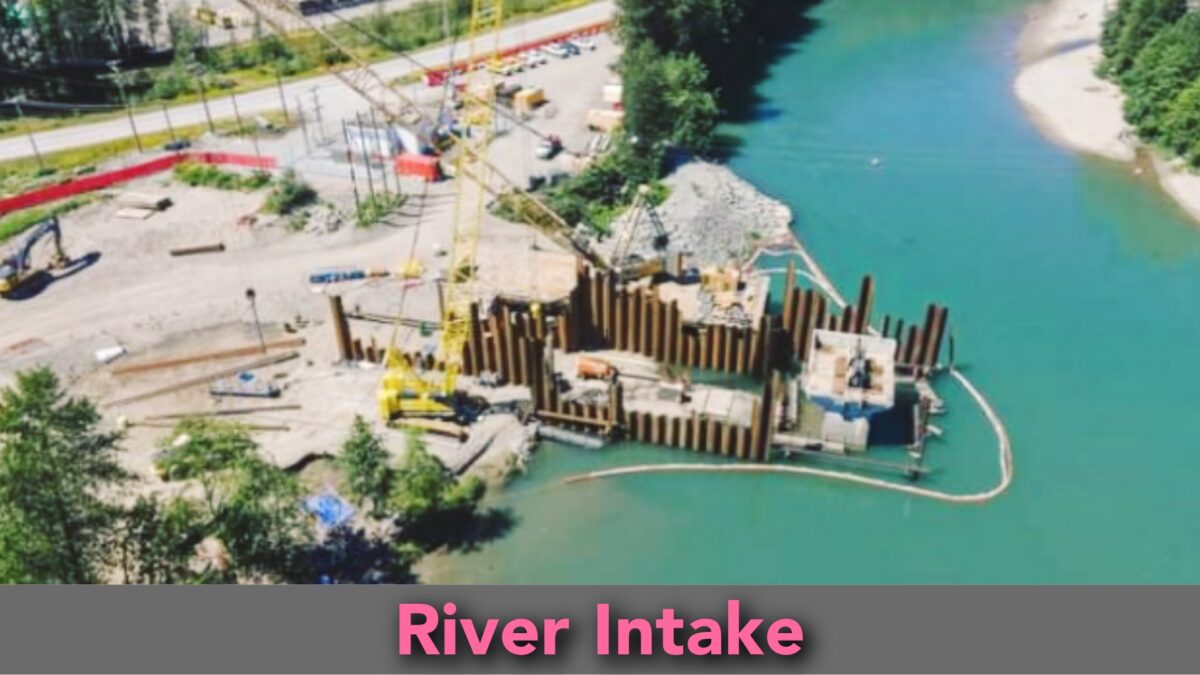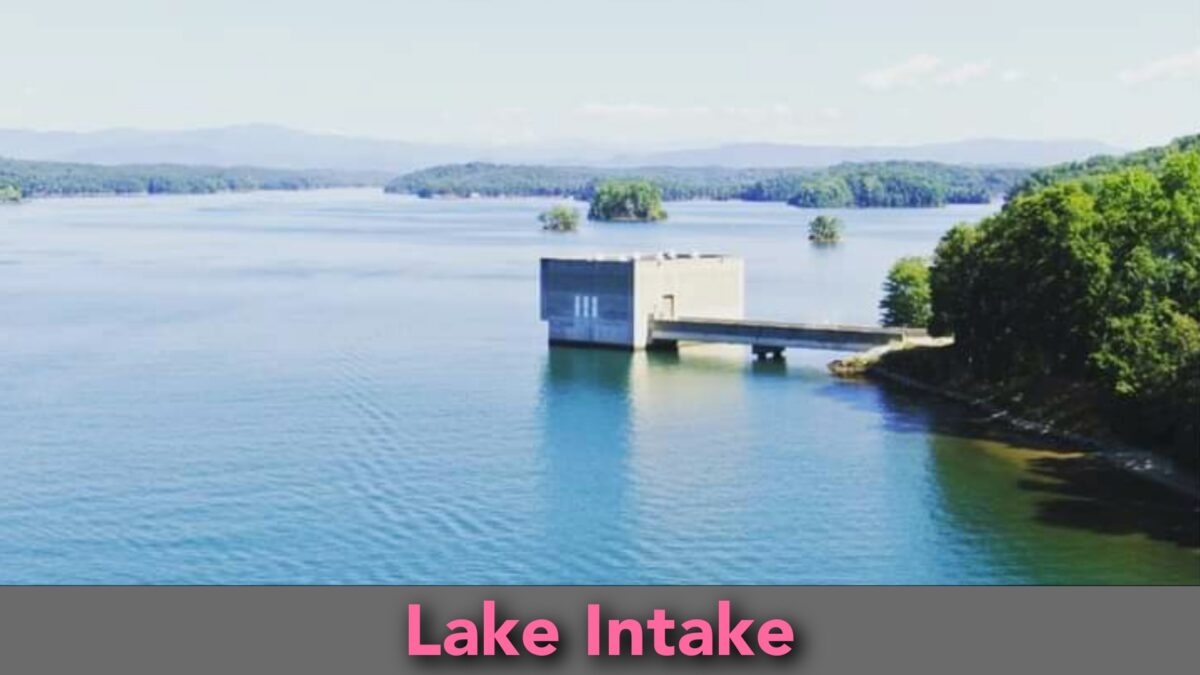Generally there are 4 types of intakes. We will discuss these types of intakes in detail.

Table of Contents
Different Types Of Intakes
- Canal Intake
- River Intake
- Lake Intake
- Reservoir Intake
Let’s know more about these types of intakes.
1. Canal Intake
The canal intake actively collects water from the canal by utilizing a carefully designed structure. It incorporates adjustable gates or openings positioned along the canal’s edge to regulate the flow of water entering the intake. Constructed with durable materials like concrete or steel, the intake withstands the force of the flowing water.

The main purpose of the canal intake is to divert a controlled amount of water from the canal for various applications, including irrigation, industrial use, or supplying water to cities and towns. By opening the gates or openings, water flows into the intake and is directed through a system of pipes or channels for further distribution or treatment.
To ensure efficient water collection, the canal intake features screens or grates that prevent debris, large objects, or aquatic organisms from entering the intake system. These screens maintain the water’s quality and prevent clogs or damage to downstream equipment.
Canal intakes play a crucial role in managing water resources and providing a reliable water supply. They maximize water capture from the canal while minimizing losses, ensuring the sustainability of the water source. Proper operation and maintenance of canal intakes are vital to ensure their functionality and prevent disruptions in water supply.
2. River Intake
A river intake is a structure that gathers water from a river for various purposes, such as providing clean water, generating hydroelectric power, or supporting industries. These intakes are usually positioned in cleaner and less polluted areas of the river, away from potential contaminants.

River intakes have specific components that serve important functions. They include a screen or grate to block large objects from entering, a pipe or channel to transport the water to a treatment or power plant, and a valve or gate to control the water flow.
While river intakes play a vital role, they can also impact the river ecosystem. The construction of intakes disrupts the natural water flow, alters water temperature, and removes sediment from the riverbed, which can harm fish and other aquatic life.
River intakes can also have positive effects on the environment. They help decrease pollution and improve water quality for downstream users by removing sediment and contaminants from the water.
3. Lake Intake
Lake intake involves the extraction of water from a natural or man-made lake for various purposes. It serves as a crucial component of water supply systems, particularly in regions abundant in lakes that can provide a significant source of freshwater. The process includes extracting water from the lake, treating it, and distributing it to consumers or using it for industrial purposes. Municipal water supply networks, irrigation systems, and industrial facilities commonly employ lake intakes.

The first step in a lake intake system is selecting the location, which involves identifying the most suitable area within the lake for water extraction. Factors such as water depth, water quality, and proximity to the intended water treatment facility determine the optimal intake location. Once the site is chosen, construction of intake structures takes place, typically consisting of intake pipes or screens. These structures are strategically positioned to draw water from the desired depth and minimize the intake of sediment or debris.
The intake system uses a pump or gravity to draw water from the lake into the intake pipes. In some cases, screens or filters are installed to prevent large debris, aquatic organisms, or excessive sediment from entering the system. This protects downstream equipment and maintains water quality standards. The extracted water is then conveyed to a treatment facility where it undergoes processes like filtration, disinfection, and chemical treatment to ensure its safety and potability
4. Reservoir Intake
In situations where a consistent flow of water in a river cannot be guaranteed throughout the year, a common solution is the construction of a dam across the river. This dam creates a reservoir, which serves as a storage facility for water. Similar to reservoir intakes, the purpose of a dam and reservoir is to collect and manage water resources.

However, there is a distinction in the positioning of the intake structures. While reservoir intakes are generally located to capture water from natural or artificial sources such as rivers, streams, or canals, they are not specifically positioned towards the upstream face of a dam. In contrast, the intakes associated with a dam are situated on the dam’s upstream side, where the water depth is at its highest.
These intakes at the dam’s upstream face are designed to ensure access to the maximum water depth available. They typically consist of various components such as gates, screens, or pipelines that regulate the flow of water and prevent debris or sediment from entering the dam. By being positioned at the upstream face, these intakes can efficiently capture water and divert it into the reservoir created by the dam.
Closing Words
These are the most common types of Intakes. I hope you liked this articl.
Thanks for reading.
Keep Learning!
Read This: Infiltration Gallery
